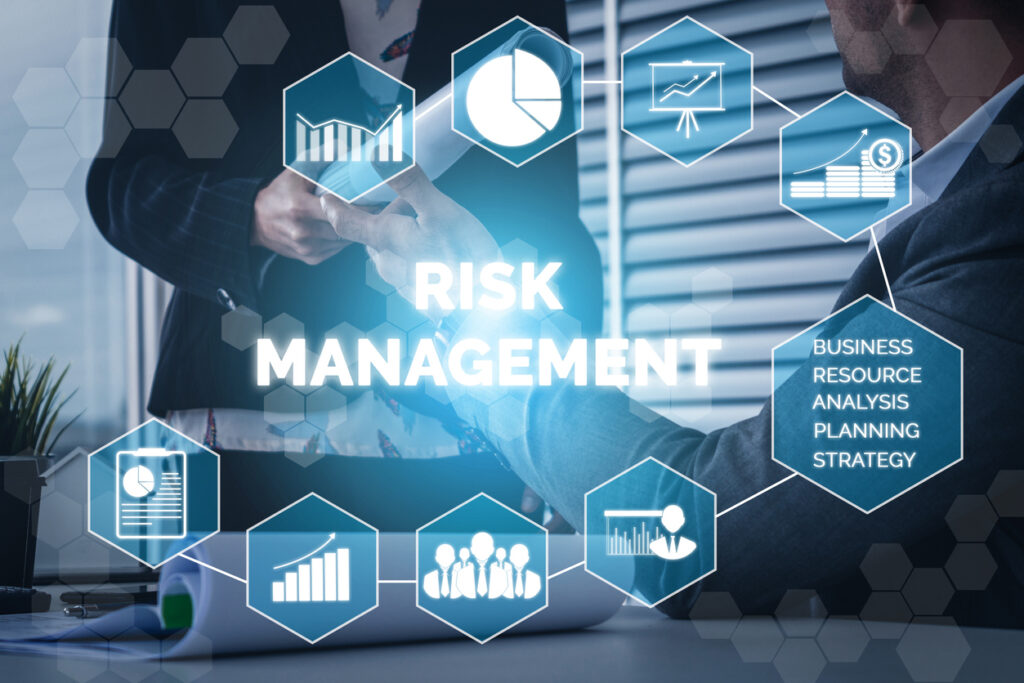Markets and their requirements are currently changing faster than ever before. Digitalisation is advancing, and more and more companies are shifting processes to the cloud. Artificial intelligence is producing results that were previously not thought possible – the outcome is uncertain.
Considering these developments, smart risk management is becoming indispensable for companies of all kinds. A robust and customised risk management process not only helps your organisation reduce uncertainty. It can also tip the proverbial scales when it comes to delivering critical value to your customers. This article explains risk management, how to implement enterprise-wide risk management and the link between risk management and information security.
What is risk management about?
Risk management in a company systematically identifies, evaluates and deals with potential risks. These risks could affect the company’s objectives, assets and stakeholders. Every company has its own risks, depending on the industry and context. An effective strategy requires tailored processes to analyse and appropriately manage the risks.
As the use of online technologies in the business context increases, so do the threats. Examples include home office and cloud services to which companies are exposed. Dealing with these risks in a planned manner is essential for a company’s information security.
Certification to ISO 27001 is particularly important for those companies that work with large amounts of personal data. This is even more true for companies in critical infrastructures, e.g. the healthcare and financial sectors. ISO 27001 is the international standard for information security and lays the foundation for a company-wide information security management system (ISMS), which in turn defines measures for risk management in the company. This makes the ISMS a particularly important element for the long-term success of a company.

Development of a risk management process
Risk management according to ISO 27001 follows a process that comprises three central steps:
- Identifying and assessing risks
- Developing a risk treatment plan
- Assessing the residual risks
Below we look at each of these steps in detail and provide you with useful best practices. Are you ready?
1. Identification and assessment of risks
There are various approaches to identifying and assessing risks for a company. Approaches focusing on assets to be protected, on vulnerabilities, on threats and on scenarios are particularly common. Each variant has certain advantages and disadvantages and areas of application in which it is particularly useful.Before you start with the actual assessment of risks, you must first decide on a basic perspective for the analysis. Basically, there are two categories: qualitative and quantitative risk analyses.
2. Develop a risk treatment plan
Once the potential risks to an enterprise have been identified and assessed, a risk treatment plan must be developed. This is used to manage or eliminate the risks. Regardless of the industry, four ways have been established to deal with risks to businesses.
- Avoiding the risk
„Avoiding the risk“ in this case means doing everything possible to eliminate the cause of the risk. This may include stopping certain activities, no longer serving certain markets or no longer pursuing certain projects. Avoiding the risk makes sense above all when the risk is very likely and the possible consequences would be particularly fatal.
- Reducing the risk
If a company decides to „reduce risk“, it takes measures to reduce the risk or mitigate consequences. These include the introduction of measures, processes or guidelines. This option makes sense if the probability of occurrence is low and the possible consequences are significant for the company.
- Transfer of risk
In „transferring the risk“, the risk is transferred to another party, for example by taking out insurance or outsourcing certain activities to a third party. This option is always chosen if the possible consequences of a risk would be high and the company itself cannot or does not want to take countermeasures.
- Accept (retain) the risk
In this option, the risk and its possible negative consequences are accepted. Instead of taking countermeasures, one prepares as far as possible, e.g. through monitoring or contingency plans, and includes the negative consequences as costs in calculations. This option always makes sense if the possible negative consequences of a risk are relatively small and the company is prepared to bear them.
3. Review and check for residual risks
After the risk treatment plan has been completed, it must be reviewed for its effectiveness and possible residual risks. If residual risks are identified, they can be assessed using the above approaches and integrated into the existing plan. The final review is to ensure that the internal risk management is designed for the long term and is continuously monitored and controlled. Any changes in business processes or the business context must be taken into account and may lead to changes in the risk treatment plan.
Cybersecurity and compliance are complex and becoming more complicated as more sophisticated threats emerge across the globe. Comprehensive cybersecurity, driven by senior management, can provide flexible and responsive solutions to these issues and protect businesses with an exceptionally secure and robust infrastructure. PATECCO offers you competent expert advice and solutions tailored to you in order to optimally support you in your risk management. In addition, we support you with ISO 27001 certification, your DSGVO compliance and develop individual strategies for your company-wide risk management.
